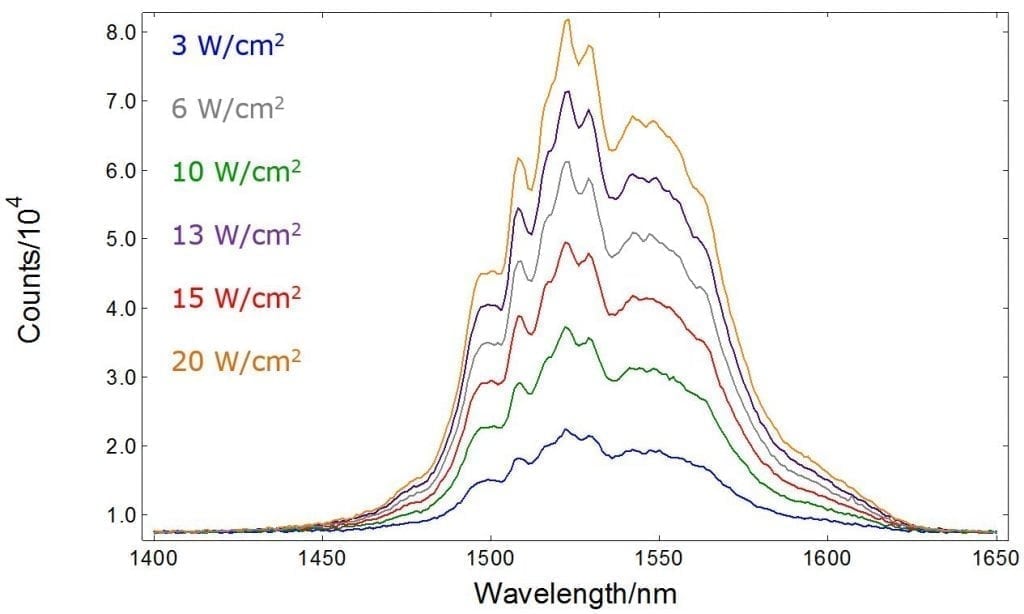Fluorescence Up-Conversion in Rare-Earth Materials
Up-conversion finds important applications in biological labels, photodynamic therapy, optical sensors, laser, light emitting diodes and solar cells. Up-conversion involves the addition of photons mainly via sequential absorption and energy transfer between ions in an excited state, with subsequent emission of photons with higher energy. However, this process is not linear with excitation power and the up-converted emission saturates at high powers.
Excitation spectra were measured using an FLS980 Fluorescence Spectrometer equipped with a 450 W Xe lamp and double excitation and emission monochromators. For emission and time-resolved spectra, a 976.4 nm diode laser (CNI, MLL-III-980-100mW) with a PM-1 modulator to accommodate continuous and pulsed excitation. Emission was detected with photomultiplier tube
detectors in the visible (PMT-900) and the NIR (PMT-1700).
One of the most efficient and extensively studied phosphors for near-infrared to visible up conversion emission is the erbium-tterbium doped sodium yttrium fluoride (NaYF4:YbEr). For photoluminescence measurements, a thin layer of the up-conversion phosphor (Sigma Aldrich 756555-25G, NaY0.77Yb0.20Er0.03F4) was clamped between quartz glass slides and placed in a front-face holder. The widely established method using an integrating sphere was used to determine the absolute photoluminescence quantum yield (PLQY).
Figure 1: Emission spectra of NaYF4:Y3+Er3+
Download the Full Up-Conversion Application Note
Fluorescence Up-Conversion in Rare-Earth Materials
FLS 1000 Photoluminescence Spectrometer
For further information on the FLS 1000 Photoluminescence Spectrometer, why not contact one of our sales team today at sales@edinst.com.
Sign-Up for our Application and Technical Notes
If you have enjoyed reading our Application Note, why not sign up to our infrequent newsletter via our red Sign-Up button below.









